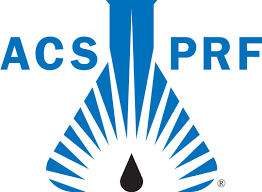Level-Set Method Simulation of Anisotropic Phase Transformation Through Faceted Growth
In this project, level-set method is used to simulate phase transformations with anisotropic kinetics where the transforming interface is faceted. The method overcomes previous limitations of this method in tracking dynamic evolution of a large number of growing grains. The method is then used to simulate multi-grain phase transformations where the facets are three low-index ([100], [111], [110]) planes that yield morphologies including cube, octahedron and rhombic dodecahedron. The microstructure evolves under site-saturated nucleation and constant nucleation rate. The cube morphology undergoes fastest transformation followed by octahedron, rhombic dodecahedron and sphere. It is also shown that the Johnson-Mehl-Avrami-Kolmorgorov theory can be used to describe the kinetics of the faceted phase transformation. The resulting microstructure shows non-convex grain shapes with highly corrugated surfaces. The structures are also characterized using the average grain length along certain low index crystallographic directions, the coherent length. This measurement shows that there is a significant difference in the coherent length in different directions for a cubic morphology of the kinetic Wulff shape anisotropy, while no meaningful differences in the coherent length for other Wulff shapes.
TEM Image Processing to Determine Interface Mobility
The crystallization kinetics of Zn0.3In1.4Sn0.3O3 (ZITO-30) thin films is investigated via an isothermal in-situ Transmission Electron Microscopy (TEM) measurements. Extensive analysis is conducted in order to reveal the nucleation mechanism and growth rate at four different temperatures. The results show that the nucleation rate in this system is time dependent and continuously decelerates following a power law decay. The crystal growth rate is constant at a given temperature and interface-limited growth is the controlling mechanism in a-ZITO-30 crystallization kinetics. The activation energy for the overall process and interface growth are derived from the experimental data. A morphological study of the grains shows that the {100} interfaces have low mobility and are responsible for the anisotropic crystal shapes. It is found that during the nucleation process the {111} and {100} planes of the crystal form parallel to the film-vapor interface. The results demonstrate rather complex yet tractable correlation between experimental results and theoretical underpinning in complex multicomponent oxide thin films.
Thin Film Phase Transformation Kinetics: From Theory To Experiment
The Level-set method simulation is used to address the effect of finite size on kinetics of thin film phase transformations. A systematic kinetic study is conducted by determining the characteristic length and time scales of the system. The result of simulation is then incorporated in the classic description of Johnson-Mehl-Avrami-Kolmogorov for a nucleation and growth phase transformation to extract the general trend of the Avrami exponent and rate constant changes with respect to the film thickness. We show this change makes the activation energy temperature dependent in finite size. Through this we develop a methodology that links experimental data with kinetic parameters, including the nucleation rate and interface growth velocity.
The role of boundary variability in polycrystalline grain-boundary diffusion
We investigate the impact of grain-boundary variability on mass transport in a polycrystal. More specifically, we perform both numerical and analytical studies of steady-state diffusion in prototypical microstructures in which there is either a discrete spectrum of grain-boundary activation energies or else a complex distribution of grain-boundary character, and hence a continuous spectrum of boundary activation energies. An effective diffusivity is calculated for these structures using simplified multi-state models and, for the case of a continuous spectrum, employing experimentally obtained grain-boundary energy data. We identify different diffusive regimes for these cases and quantify deviations from Arrhenius behavior using effective medium theory. Finally, we examine the diffusion kinetics of a simplified model of an interfacial layering (i.e., complexion) transition.
Hybrid atomistic simulation of fluid uptake in a deformable solid
Fluid imbibition via diffusion in a deformable solid results in solid stresses that may, in turn, alter subsequent fluid uptake. To examine this interplay between diffusional and elastic fields, we employed a hybrid Monte Carlo–molecular dynamics scheme to model the coupling of a fluid reservoir to a deformable solid, and then simulated the resulting fluid permeation into the solid. By monitoring the instantaneous structure factor and solid dimensions, we were able to determine the compositional strain associated with imbibition, and the diffusion coefficient in the Fickian regime was obtained from the time dependence of the fluid uptake. Finally, for large, mobile fluid atoms, a non-Fickian regime was highlighted and possible mechanisms for this behavior were identified.





